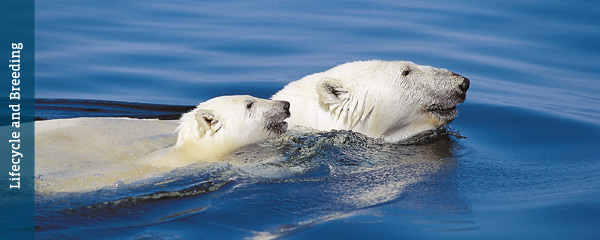1.
19 distinct populations of polar bears live in 4 different sea ice regions.
2.
5 countries have polar bear populations; Canada, USA (Alaska), Denmark (Greenland), Norway (Spitsbergen), and Russia.
3.
The global polar bear population as of 2008 was between 20,000 and 25,000 bears.
4.
Canada is home to nearly 60% of the world’s polar bears.
5.
The average polar bear litter is 1-2 cubs, but can be as large as 4.
6.
Polar bears weigh less than 1 pound at birth.
7.
Polar bears reach maturity at age 4-5 for females, and age 6 for males.
8.
The average life span of a polar bear in the wild is 15-18 years, with the highest recorded age being 32.
9.
Polar bears are the largest land predator in the world.
10.
The average adult male polar bear are 7’10”-9’10” long and weigh 775-1,200 pounds.
11.
The average adult female polar bear are 5’ 11”-7’10” long and weigh 330-650 pounds.
12.
The largest polar bear ever recorded was a 12’ long male weighing 2,209 pounds.
13.
Polar bears appear white, but are actually black with transparent fur.
14.
Only a polar bear’s nose, eyes, and breath are visible on infrared camera.
15.
After not eating for 7-10 days, a polar bear can slow its metabolism until it finds its next meal.
16.
A polar bear can sniff out a seal on the ice up to 32 kilometres away.
17.
Polar bears evolved from brown bears 150,000 years ago.
18.
Polar bears are the only bears that are classified as ‘sea mammals’.
19.
A female polar bear can swim up to 354 kilometres at a time.
20.
Polar bears have a thick layer of blubber that enables them to survive Arctic waters.
21.
February 27 is International Polar Bear Day and every year raises awareness around the globe about the conservation of polar bears.







